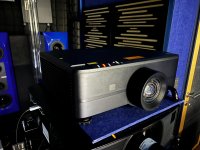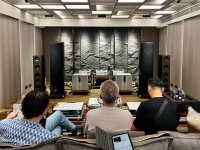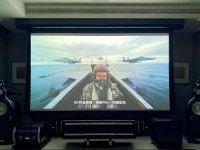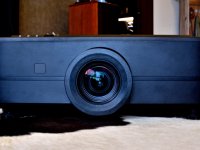|
|
馬上註冊,結交更多好友,享用更多功能,讓你輕鬆玩轉社區。
您需要 登錄 才可以下載或查看,沒有賬號?註冊
x
Canon利用縮小Microlens Gap、降低每個像素的雜訊等技術,讓更多像素塞入同樣面積的感光元件,雜訊卻比以往更低,這項技術在40D、1D MK3、1Ds MK3上已經被強調過,這次發表的50D更是進步到"Gapless Microlens"。
這得歸功於DIGIC IV的強大影像處理技術與能力,同時這也被認為是近年來Canon最大的進步之一。
這個技術允許21~25MP全幅感光元件的雜訊抑制,比3年前5D的12MP全幅感光元件的雜訊抑制表現還要好1~1.5級
請參考以下兩張參考圖:
縮小微型聚光鏡片間隔

縮小低通濾鏡與感光層的距離

對這些技術有興趣的朋友可以好好看一下這一大段原文●Reducing the micro lens gap to capture all the light hitting the sensor. This has been highlighted in the 40D, 1D III and 1Ds III sensors and the new 50D sensor now achieves effective 100% coverage. Only very minor improvements are expected from this point on (e.g. shaping the lenses towards the corners of the frame to capture angled light.
●Reducing the noise level of each pixel. Canon have made changes over several generations of sensors to achieve this, bringing the amplifiers closer to each pixel, changing micro-circuit configuration and lowering voltages so the sensor runs colder. Again the design of the 50D is a big step forward here from the 40D and 1D III etc. Canon have one more big jump lined up, with low voltage cold running CMOS designs to gain at least an additional stop in lower noise at higher ISOs or long exposures.
●Better digital noise reduction. These are the changes in DIGIC noise processing. First with the Chroma Noise reduction in DIGIC III and now with more advanced multi-level noise reduction options in DIGIC IV. Canon believe they have made most of the gains possible via processing algorithms but do still have some areas to develop. The next focus will be faster noise reduction processing so that it does not come at an impact on frame burst rates (look to the 1D3 replacement for example)
●Pixel binning for high ISOs. A new technology enabled by the complexity and processing power of DIGIC IV where they can bin 2, 4 or 8 pixels together at the raw level and average out the noise between them. This is seen by Canon as a key technology in balancing very high resolution sensors (in the 50mp range) with low noise at very high ISOs. Right now they are not pushing this too much with the 50D so as to not create confusion in the market (they see more potential for the technology as sensors get larger and in the pro-market).
●Increased image resolution – This is a newer strategy (most evident on the 450D where they have changed the anti-aliasing filter (thinner and closer etc) so as to achieve a crisper image per pixel without loosing the benefits of anti-aliasing filter on diagonal edges etc.. The 50D has the same technology. One further option for the future is for Canon to drop the anti aliasing physical filter and do it in a future DIGIC generation where there can be smarter allocation of colour values than the blurring achieved by a light based filter.
●Increased raw bit depth for improved dynamic range. Here Canon have made the jump to 14 bit and will move to 16 bit in their future sensor technology generations. Canon see the main usage of extra bit depth as providing the dynamic range to translate the sensor image into a printable or viewable image with a higher dynamic range. In other words mapping the 14 or 16 bits into an 8 bit viewable or printable image that mimics the dynamic range in the scene.
●Dynamic range preservation options – Canon are putting a lot of focus into how to provide the photographer with the best options for preserving the dynamic range of the original image in both a RAW file and the 8 bit JPEG. The highlight tone preservation option on the 40D, 1D III etc was the first step. The new 'automatic brightness' options in the 50D are another, where they try and optimise the brightness of various parts of the image to reduce the dullness from shadows. Canon are planning much more in this area, down to the equivalent of varying the ISO level across the different parts of the sensor when the image is taken (easier in live view mode of course).
尤其是第三點"Pixel binning for high ISOs,這可能也是5D後繼機有能力把像素規格開到很高(比如謠言指出的21.1MP)的原因,或許可能讓最大像素拍攝時,高ISO略輸D3/D700,但縮到約12MP拍攝時,雜訊跟D3/D700一樣,解像力卻更高
當像素越高時,是否可把這些像素拿來做其他應用?把數個"(ex: 2、4、8個pixels)pixel資料合併當成一個pixel資料,藉此分散雜訊到每個pixel裡,因次當需要使用高ISO時,可能是降低拍攝像素來達到,讓高像素感光元件同時能保有可用高ISO的能力
50D讓我讚賞的繼1Ds3的sRAW之後,在15.1MP RAW之外還提供了7.1MP(sRAW 1)與3.8MP(sRAW 2)兩種RAW格式,就是這種解決方案,讓高像素與雜訊能取得更佳平衡點;相較於S家採用近乎非破壞性的破壞性壓縮來做較小體積RAW檔,Canon的非破壞性sRAW幾乎可說是目前業界最佳作法
假設5D 2用改良式1Ds 2感光元件(gapless micorlens) -- 我認為是能維持跟1Ds 3差距的一點可能性,但也不排除使用改良式1Ds 3感光元件,畢竟像素只是一項影響等級認定的要素,並非主要或全部 -- 但不管可能用哪種感光元件加上這些技術與DIGIC IV晶片,可能都可以讓雜訊表現更好
1Ds 3 去年8/20發表,台灣定價約24萬6左右,假定5D後繼機規格接近上述,消費者怎能抱著虛幻不實際的想法,希望5D後繼機又要如此高規格又要比當初5D上市價還低?在商言商還是不變的基本觀念
有可能利用9點雙十字對焦、觀景窗視野率放大率、結構材質、、耐用性、防滴防塵等級這幾個地方來跟1Ds 3區隔,畢竟我認為即便在這種氛圍下(Nikon D3/D300/D700/D90、Sony α200、α350及可能的α900等市場競爭者紛紛出籠),Canon也不會讓5D後繼機規格太過以下犯上
我不會也不願去猜測5D後繼機可能定價,因為5D後繼機不管怎麼開規格,性能跟價格都有可能稍微打到1Ds 3
兩機可能的區隔,每個人有自己的著眼點,在我看來光是觀景窗視野率放大率、結構材質、耐用性這三點,差別就很大了,更別說是對焦系統等級差異啦~
---------------------
這篇是我在5D MK2還沒發表之前寫的
|
評分
-
查看全部評分
|




